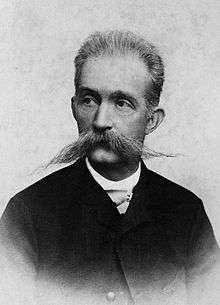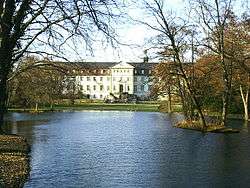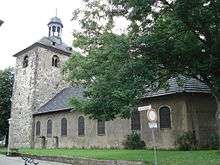Georg von der Decken
Count[1] Georg Friedrich Armand von der Decken (5 October 1836 in Braunschweig - 19 August 1898 in Salzgitter-Ringelheim) was owner of Castle Ringelheim and a member of the German Reichstag.



Life
Decken was the son of Count Adolphus von der Decken and Louise von Wallmoden. He married in 1866 in Schlobitten Marie zu Dohna-Schlodien. She grew up in Mallmitz in Silesia. The couple had five children.[2]
Before 1890 count von der Decken was attaché at the Hanoverian Embassy in Paris. Here he had the opportunity to deepen his technic in painting.
He was party leader of the German-Hanoverian Party since 1890 and distinguished as a political opponent of Otto von Bismarck and the Prussian supremacy in the German Reich.
From 1890 until his death he was a member of the German Parliament for the Province of Hanover.
He was highly musical, painted large-scale oil paintings and created wooden sculptures. His motives were in accordance with the prevailing taste, romantic landscapes and figures from Greek heroic legend. In the church of Ringelheim there are still his oil paintings: the altar piece and the twelve disciples of Christ in life-size.[3]
References
- Regarding personal names: Graf was a title before 1919, but now is regarded as part of the surname. It is translated as Count. Before the August 1919 abolition of nobility as a legal class, titles preceded the full name when given (Graf Helmuth James von Moltke). Since 1919, these titles, along with any nobiliary prefix (von, zu, etc.), can be used, but are regarded as a dependent part of the surname, and thus come after any given names (Helmuth James Graf von Moltke). Titles and all dependent parts of surnames are ignored in alphabetical sorting. The feminine form is Gräfin.
- Herwart and Thassilo von der Decken, Stammtafeln der Familie von der Decken (The Pedigrees of the Family von der Decken), 1994 p. 34-35
- Thassilo von der Decken, Anmerkungen zu den Stammtafeln der Familie von der Decken (Notes on the Pedigrees of the Family von der Decken), Stade 1998, p. 275-276